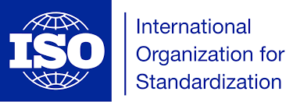What is ISO 45001?
ISO 45001 is an international regulation for occupational health and safety that will provide a framework to improve employee safety, reduce work-related injury and risks, and prevent ill health and death. The intended outcome of the standard will be to provide safer working conditions around the world. The new standard will help organizations provide a safe and healthy work environment for workers and visitors by continually improving their OH&S performance. The standard is based on OHSAS 18001, conventions and guidelines of the International Labor Organization. If you are transitioning from OHSAS 18001 to ISO 45001, please refer to our transition page.
ISO 45001:2018 standard provides organizations with requirements to meet certification. In February of 2024, ISO published ISO 45001:2018/AMD1:2024, which amends Section 4 to include climate action considerations. If you are ready to become ISO 45001 certified, we suggest the following information for you and your organization:
- Buy and download the ISO 45001 standard here.
- What is an Occupational Health and Safety Management System?
- Learn about the ISO 45001 Requirements.
- Learn the Steps to ISO 45001 Certification.
- ISO 45001 Training reviews all the clauses of ISO 45001:2018.
- Learn how to advertise your ISO 45001 certification.
The basic requirement of ISO 45001 is for organizations to provide a safe and healthy place for all personnel to work. This is done by preventing work-related injury or ill-health. The standard requires active involvement of top management, and to ensure that all employees are aware of the OH&S management system.
ISO 45001 Basic Principles
The ISO 45001 standard will follow the same management system approach as ISO 9001 and ISO 14001, including the high-level structure, that helps with management system integration. It will also take into consideration other International Standards such as OHSAS 18001, the International Labor Organization’s guidelines on occupational safety and health management systems, along with other various national standards.
The new OH&S standard is based on the common elements found in all of ISO’s management systems standards and uses a simple Plan-Do-Check-Act (PDCA) model, which provides a framework for organizations to plan what they need to put in place in order to minimize the risk of harm. Read More…
ISO 45001 Key Features
- Adoption of Annex L to share high-level structure, content, terms, and definitions with the latest ISO management standards.
- Top management commitment.
- Context of the organization.
- Risk-based thinking.
- Process approach.
- Consultation and worker participation.
- Prevention of ill-health and injury.
- Supplier and sub-contractor management.
ISO 45001 Benefits
The benefits of an effective management system to an organization include:
- More efficient use of resources and improved financial performance,
- Improved risk management and protection of people and the environment, and
- Increased capability to deliver consistent and improved services and products, thereby increasing value to customers and all other stakeholders.
Learn more about the Benefits of ISO 45001.
Why do companies want to pursue ISO 45001?
Fundamentally, it is everyone’s job to support and protect a safe and healthy workplace by preventing injury, preventing ill health, reducing hazards and continually improving the OH&S performance. Organizations are becoming increasingly concerned in achieving sound health and safety performance, often while delivering cost savings and demonstrating Good Stewardship and Good Corporate Citizenship.
Market Pressure
Many organizations decide to implement ISO 45001 and obtain registration because it assures employees, customers, shareholders, suppliers, regulators and the community at large that the company has an internationally recognized Occupational Health and Safety Management System (OHSMS) in place. An organization with an effective health and safety system will typically have safer and healthier workplaces, comply with regulations and meet the expectations of all interested parties better than an organization that does not have an effective OHSMS. Many organizations will require their suppliers to have the ISO 45001 Registration.
Who is ISO?

ISO (International Organization for Standardization) is a network of standards institutes with members from 163 countries with a central office in Geneva, Switzerland, that coordinates the system.
ISO is a non-governmental organization that forms a bridge between the public and private sectors and is the largest standards organization in the world.
- Many of its member institutes are part of the governmental structure of their countries or are mandated by their government.
- Some members have their roots uniquely in the private sector, having been set up by national partnerships of industry associations.
Therefore, ISO enables a consensus to be reached on solutions that meet both the requirements of business and the broader needs of society.


